- 02 9712 1736
- [email protected]
- 212 Great North Road, Five Dock, NSW 2046
- Open 6 days from 7am
Stenosis define: In medical terminology any narrowing of a space involving the spine is called spinal stenosis. Spinal stenosis often will be diagnosed in either the spinal canal or foraminal space, the space where the spinal nerves leave the spinal canal. Stenosis in these regions will effect the spinal cord or spinal nerves as they leave the spinal column.
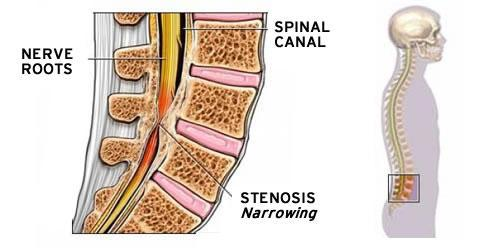
The narrowing of the spinal spaces creates pressure on the spinal cord and spinal nerves leaving you with symptoms such as pain, muscle weakness, foot drop or loss of bowel or bladder control. We overview spinal stenosis below so you can learn about the importance of early diagnosis and treatment options.
There are two main spinal stenosis that occur. Spinal canal stenosis is the narrowing of the canal which houses your spinal cord. Your spinal cord is protected by the bones and disc of vertebral column. A narrow spinal canal most commonly occurs in the lumbar spine and cervical spine. Foraminal stenosis occurs where the spinal nerves leave the spinal canal and head out into the body to innervate your muscles, organs and skin. This is often referred to as the nerve roots and pressure on the spinal nerves cause intense symptoms.
Spinal stenosis can have a variety of causes:-
1) Bone changes
2) herniated disc or disc bulge
3) congenital spinal stenosis (small spinal canal)
4) spinal tumor or space-occupying lesion
5) spinal instability
6) Ligament thickening
Developing spinal stenosis from these causes can occur over different time periods, however, all result in spinal cord and nerve root pressure, which will create spinal stenosis symptoms.
Like spinal stenosis, foraminal stenosis is caused by a decrease in the canal a spinal nerve root leaves through. The above list of bone causes and spinal instability will create changes at the facet joints of the spine. The facet joints are how two vertebral bodies are connected. For example, cervical stenosis can occur where bone spurs form to stabilise the facet joints of the neck, decreasing the space that the nerve root has to travel through. This decrease in space creates an irritation along the nerve. Leading to symptoms like neck pain and pins and needles.
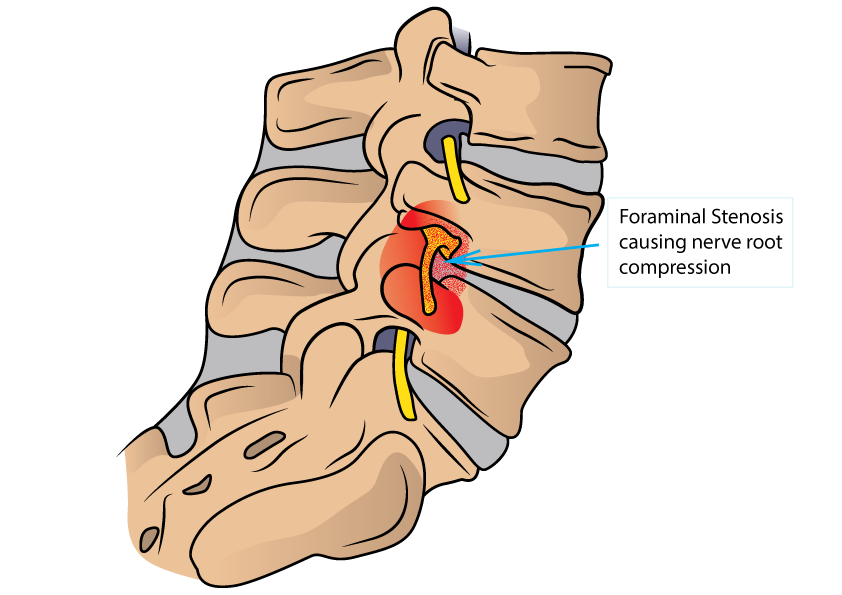
Lumbar canal stenosis or lumbar spinal stenosis is the most common form of spinal canal stenosis which puts pressure on the spinal cord. It can occur in two forms spinal canal stenosis or foraminal stenosis. lumbar spinal canal stenosis is where a narrowing of the spinal canal compresses the spinal cord or nerves. Thickened ligaments, a bulging or herniated disc, or spinal osteoarthritis commonly cause this narrowing.

Most lumbar stenosis is a form of degenerative lumbar spinal stenosis. The lumbar spine can also commonly suffer from foraminal, otherwise know as lateral canal stenosis. Foraminal canal stenosis affects the facet joints which form the lateral spinal nerve root canals this narrowing puts pressure on the affected spinal nerve roots. The symptoms of degenerative lumbar spinal stenosis can include:
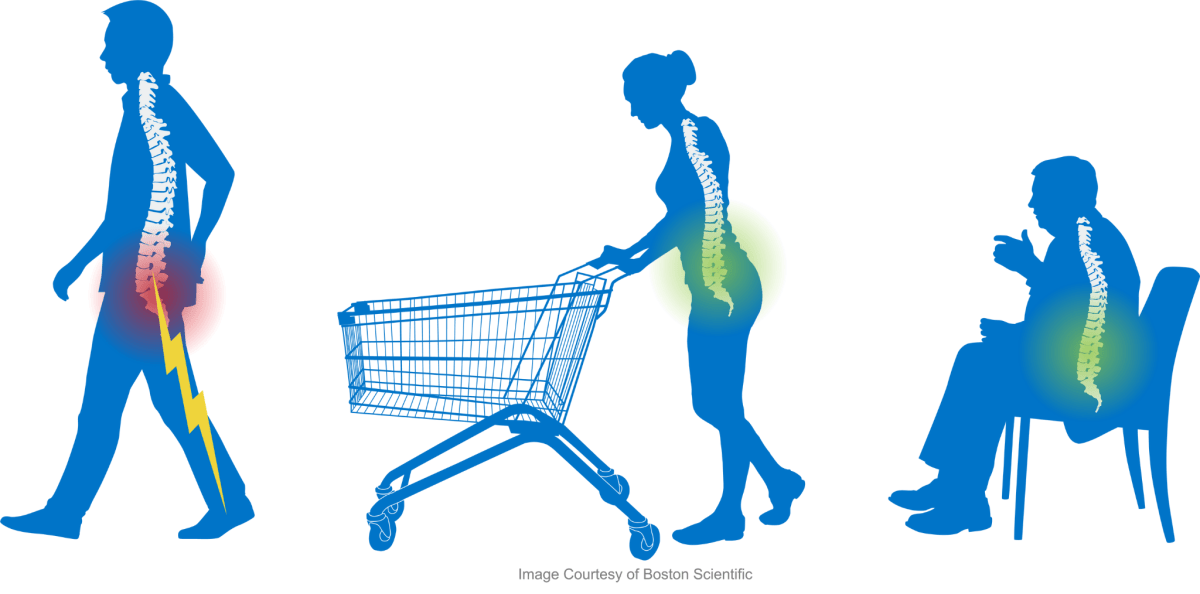
Spinal stenosis can affect any age range, however, stenosis is most common as we age. The mechanism of injury plays a role in the age people experience spinal stenosis. A herniated disc can create lumbar stenosis at a young age. Congenital stenosis can occur from birth and effected the spinal canal and spinal cord. As age, degenerative changes commonly lead to a narrowing of the spinal canal and spinal stenosis.
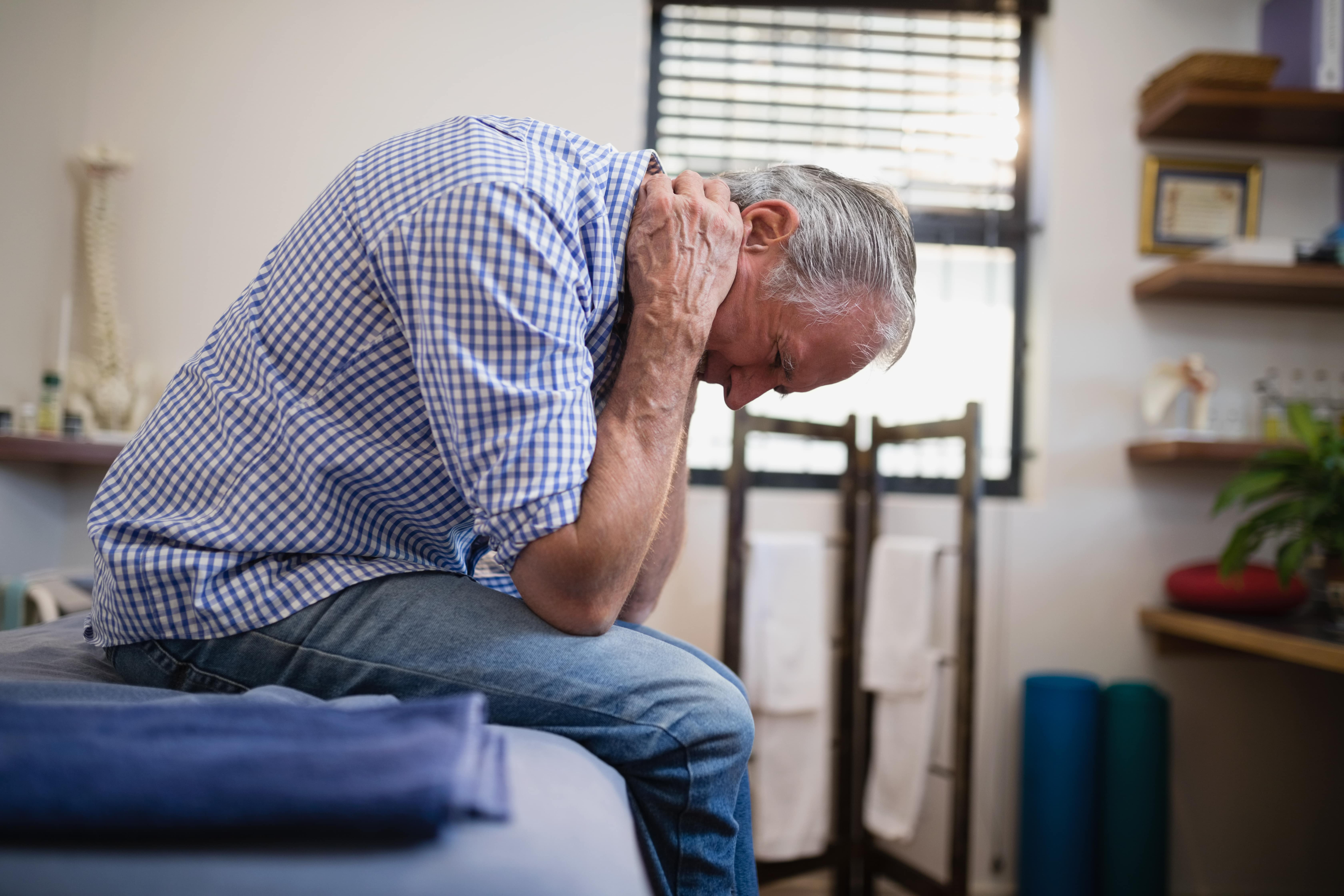
Spinal stenosis occurs throughout the spine however most often occurs at one of two locations: the lower back and neck.
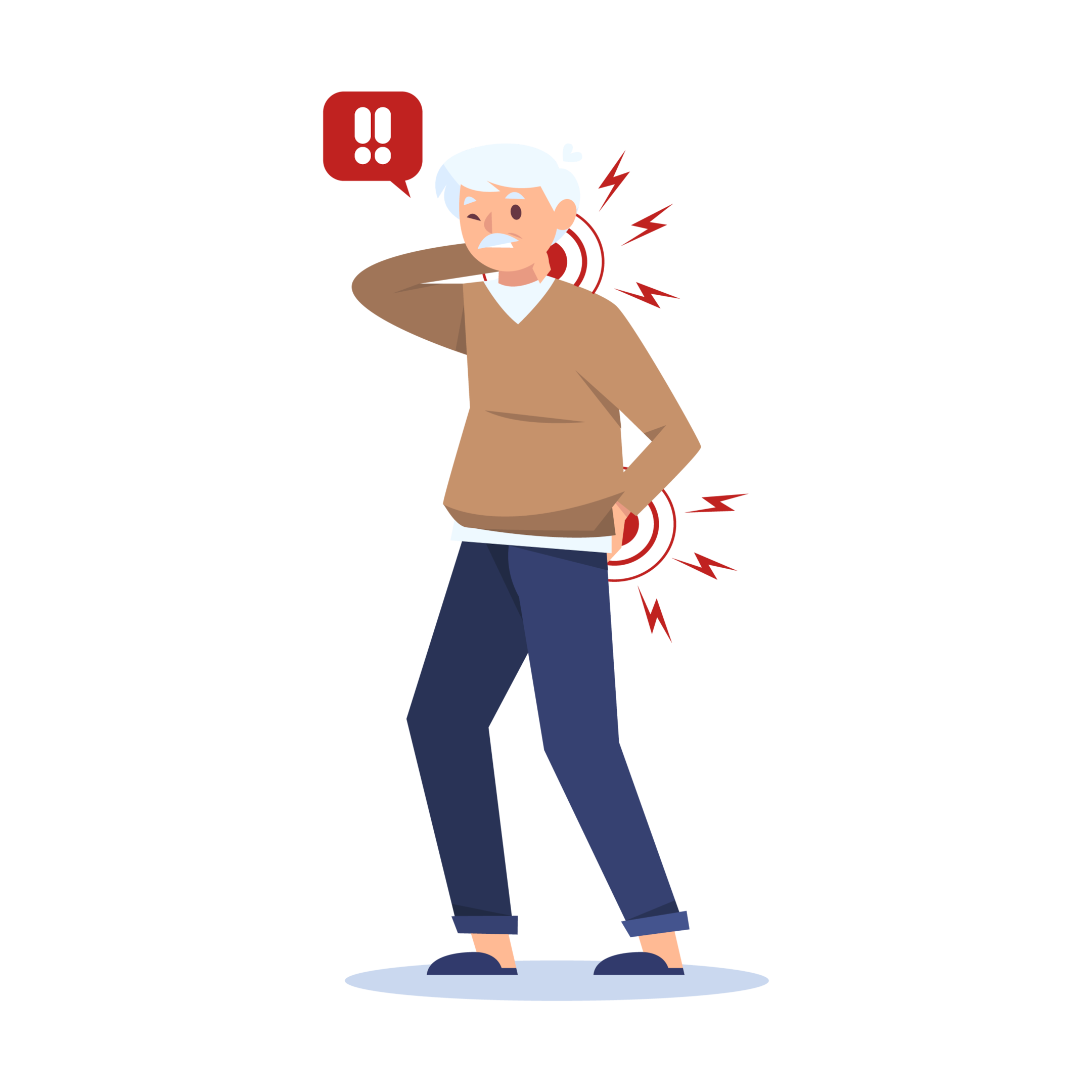
Like spinal stenosis, foraminal stenosis can occur anywhere throughout the spine. Most commonly occurring in the lower back region.
Yes, spinal stenosis is a serious condition in certain aetiologies. Spinal tumors which can place pressure on your spinal cord and nerves require immediate attention. Degenerative changes, like bone spurs, need less immediate care if they are not placing direct pressure on your spinal cord and spinal nerves. With spinal stenosis it is important to consult with your healthcare provider to receive the correct advice for you.
Your doctor will take a thorough medical history, assess you and perform an examination. If the medical history reveals any reason for medical imaging tests, your doctor will refer you straight away. If during the medical history, no red flags are identified your doctor will perform a physical exam.

Your healthcare provider will do a physical exam of your movement and neurological ability. Your healthcare provider may ask if bending in certain regions can cause you more pain than others. Your provider will examine you for the balance of your musculoskeletal body. If the physical examination reveals any reason for medical imaging tests, your provide will refer you, normally for an MRI. Typical imaging studies are: x-ray, CT scan or MRI.
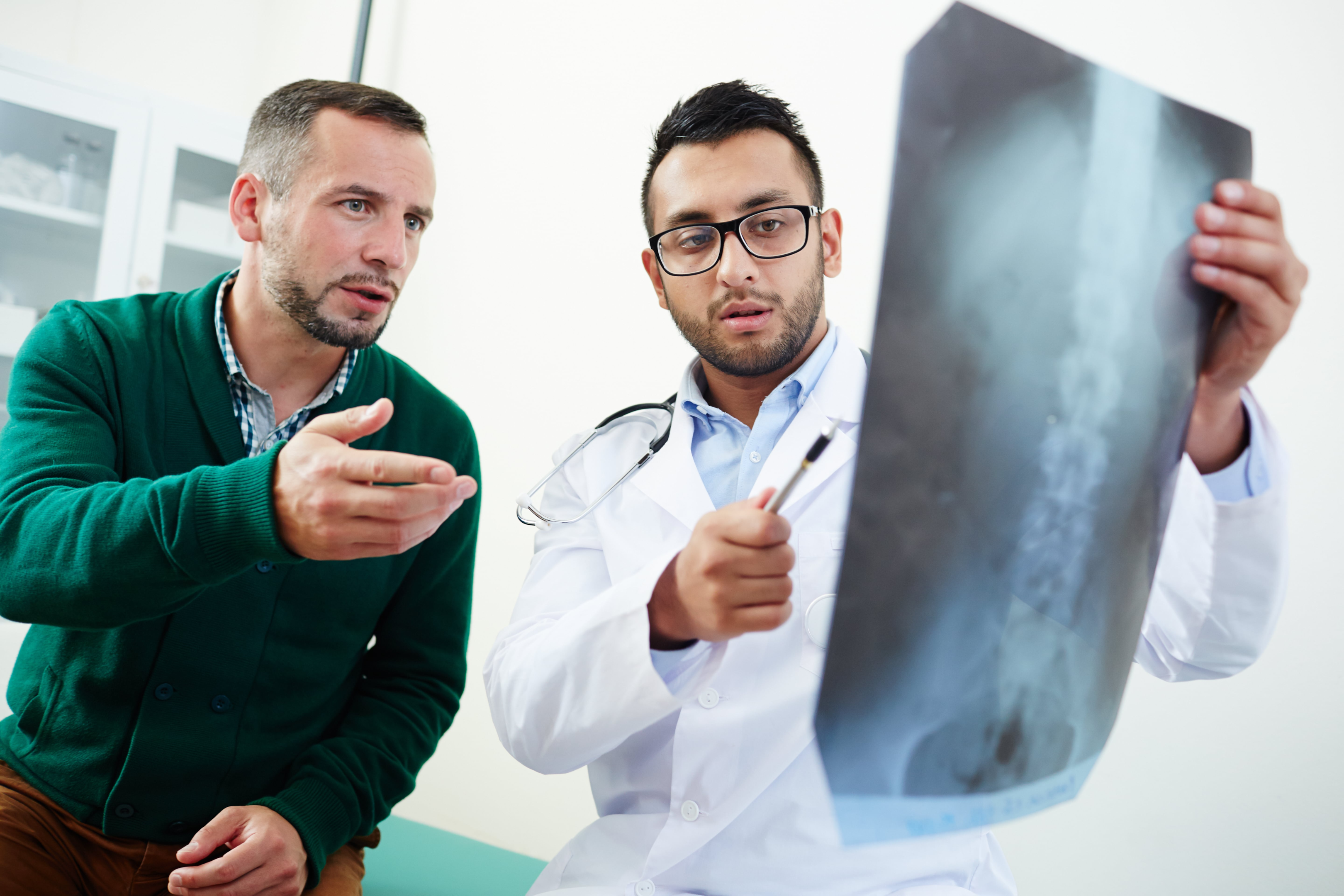
The treatment options for spinal stenosis are designed to for relieving pain. These may include:
Your General practitioner may prescribe you a range of pain medications.
Manual therapy, often referred to as physical therapy, is a treatment designed to focus on the symptoms of spinal stenosis. The physical therapy can be performed by a range of different providers Eg. Chiropractor, physiotherapist, osteopath, and exercise philologist. Your physical therapist will focus on using a variety of physical therapy techniques designed to relieve pain, improve strength, maintain flexibility, and improve balance. The goals of your physical therapist will be to help relieve symptoms and pressure on your nervous system but won’t be treating the root cause of your spinal stenosis.
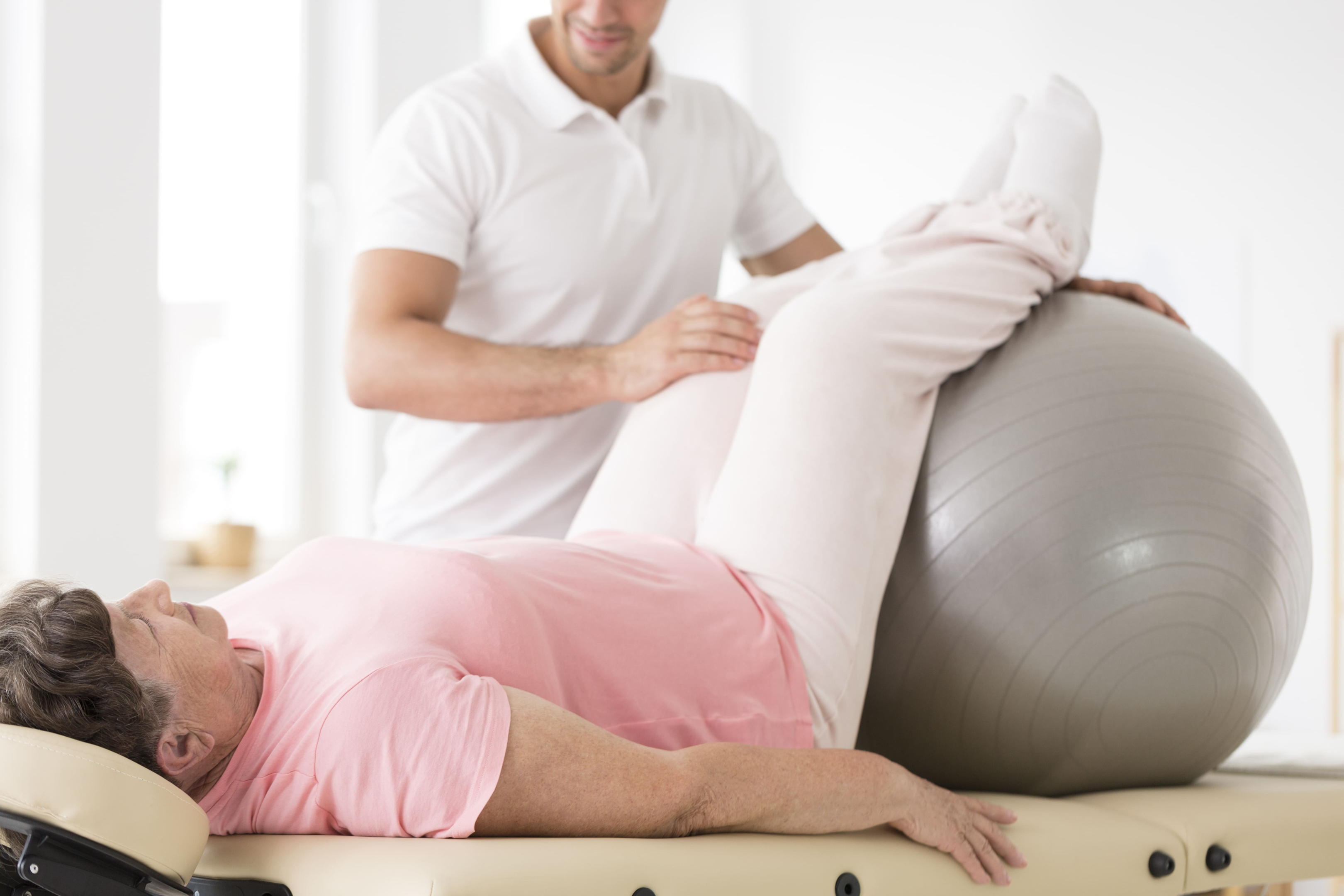
Spinal steroid injections are often used as a treatment to relieve the pain of nerve compression when it affects the nerve roots as they exit the spinal column. Injections use steroids(a anti inflammatory medications) and numbing medication to reduce the pressure on the nerve roots.
It is important to note that spinal injections may not be the best choice as they can have serious side effects and repeated injections can weaken the surrounding ligaments and normal bone.
Surgery for spinal stenosis often involves the removal of bone spurs on facet joints or vertebral bodies to decrease the narrowing of the spinal and foraminal canals. Discs herniation can narrow spinal canals, and impinge the spinal nerve roots.
To relief symptoms of spinal stenosis typical spine procedures are:
Laminectomy: The most commonly used type of surgery for spinal stenosis is a laminectomy, which involves removing a bone graft of the spinal lamina of the vertebrae. The removal of bones is sometimes accompanied by ligament or bone spur removal.
Spinal fusion: When two or more vertebrae are fused together it is referred to as spinal fusion. Spinal fusion takes pressure off the irritated spinal cord or nerves roots by decreasing movement in the region. With spinal fusion the resulting decrease in inflammation brings the patient pain relief. Whilst this in a way will cure spinal stenosis, it is important to maintain movement in the surrounding structures.
Yes, spinal stenosis can cause pain in one or more of the groin, hip, thigh, calf or foot. This is because with spinal stenosis you are placing pressure on the sciatic nerve. The sciatic nerve is a group of lower back nerves that come together to form the bigger sciatic nerve. These nerves are from your third lumbar vertebrae down to the second sacral nerve.
The sciatic nerve travels down through your hip to your foot, branching off to innervate or control your leg. With lumbar spinal stenosis, the sciatic nerve can become inflamed, causing nerve pain or numbness, a burning sensation or weakness. If you are experiencing any potential signs of spinal stenosis, it is important to consult a healthcare professional. They will treat lumbar spinal stenosis correctly.
Yes, spinal stenosis include symptoms that can affect your shoulder, arm or hand. Like lumbar stenosis, cervical stenosis can affect the nerves which travel down your arm to your fingers. The irritation to the nerves can be at the spinal cord or the nerve roots. Like with lumbar spinal stenosis, the nerve becomes inflamed and causing nerve pain or numbness, a burning sensation or muscle weakness.
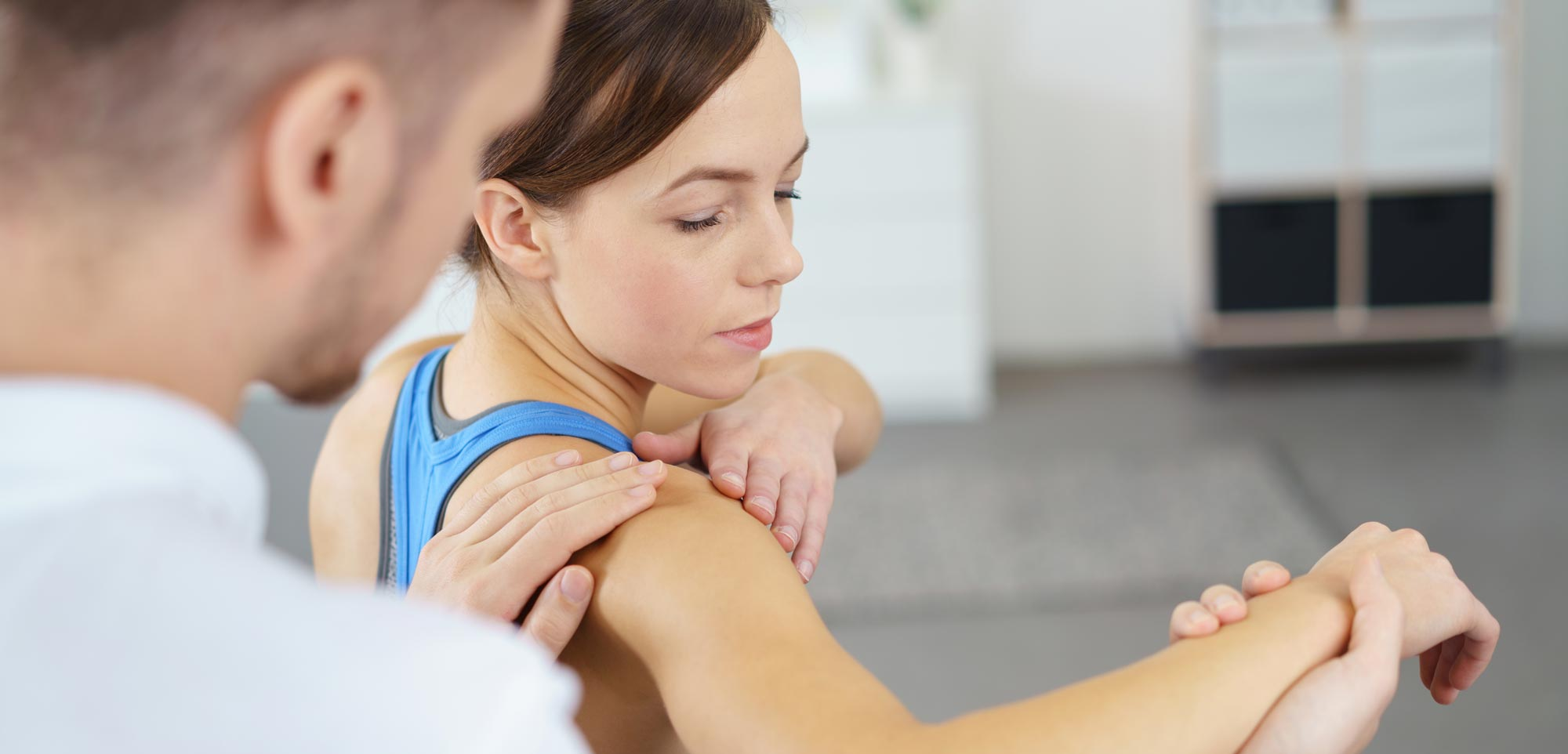
Spinal stenosis is a serious condition that may affect the spinal cord and nerves. This commonly occurs at either the spinal canal or nerve roots as they go out from the spine to innervate your body’s sensory and motor organs. Spinal stenosis can affect any area of your spine. However, it is most common in the cervical and lumbar regions of your spine.
With a variety of symptoms that range from mild to serious, it is important if you think you may have stenosis to consult a healthcare professional for the best advice and care.
If you are looking to prevent spinal stenosis, there are a few things to remember. Firstly, it is not always possible to prevent stenosis if you have a family history of arthritis or congenital changes.
For people who have a physical job and are at an increased risk of disc herniation or degenerative changes, there are some steps you can take to decrease your risk. The most important is to maintain your mobility and strength. Mobility and strength work in tandem to provide you with joint and muscle flexibility, overall strength and postural control to lift loads with the least stress on your body.
Correct lifting and bending techniques are also important so you give yourself maximum strength to perform the task at hand. If you are in a job with a repetitive action, the correct technique is of vital importance. Repetitive activity leads to accumulated fatigue and microtrauma in an area of your body. Increasing your risk of injury.
For example, in the lower back, with an incorrect lifting technique, you could create a disc bulge in the intervertebral disc. This disc bulge with time could lead to ligamentous thickening to stabilise the area. The thickening creates stenosis of the spinal canal and increases the risk of spinal stenosis symptoms.
If you perform desk-based work, deconditioning of your postural muscles is your biggest concern. With decreasing strength of the spinal muscles, you lose postural control. Increasing your risk of disc pathology or with time degenerative changes, such as arthritis. This is because your muscles are no longer able to support the loads you are placing on the body. This in turn places more stress on your joints, ligaments and intervertebral disc. Often leading to acute injury or degenerative changes with time.
To prevent help injury or degeneration from deconditioning you can undertake exercise to maintain the conditioning of your body.
Throughout life exercise is important and the same is true if you suffer from spinal stenosis or would like to help prevent injuries such as spinal stenosis.
The first step with exercise is to find an exercise you enjoy and an exercise that is not going to exacerbate your symptoms. You may need to try a few options before you find the most suitable choice for you. If you are concerned consult your local healthcare provider and they will be able to assist with finding a safe options you enjoy.
Exercise has many health benefits from increased blood flow through to improved mental and emotional well-being. For example when you take a long plane flight. You are always encouraged to move. Simple movements of your legs and arms decrease the risk of blood clots and improve your overall feeling of well-being. Exercise does not have to be hard to be effective.
When it comes to stenosis it is no different. A simple exercise will help to improve and maintain your flexibility, strength, balance and stability, as well as build overall endurance.
Patients suffering from stenosis often find that performing exercises that include a slight bend forward is more comfortable. Exercise may include cycling, either outdoors or on a stationary bike. Swimming or hydrotherapy is often found to be an enjoyable exercise if you are suffering from stenosis. Likewise, yoga or tai chi which involve slow deliberate movement can be an exercise that is beneficial.
Functional exercise performed with a healthcare professional can also be of great benefit if you are suffering from stenosis. Your healthcare provider will design a program based on your stenosis and level of fitness. Your healthcare provider will then slowly progress and modify your program based on how you are responding and feeling. This can be a great way to get started if you don’t have much exercise experience.
Spinal stenosis is a narrowing of the space where your spinal cord travels down your spine or your nerves leave your spine. It is a potentially very serious condition that an experienced healthcare provider needs to diagnose and manage. You may experience symptoms such as pain, weakness, numbness, pins and needles or a burning sensation. These symptoms can vary in intensity from mild through to severe.
There a various causes for spinal stenosis. These causes can affect a patient at any age range in life, although stenosis is more common as we age. Often patients present with the symptoms of stenosis due to degenerative changes. This can be the result of lifestyle, work or hereditary changes associated with ageing.
To prevent such changes it is important to maintain your health throughout life, by exercising, eating well and getting proper rest. While it may not stop stenosis it can go a long way to decreasing the risks and symptoms of stenosis.
If you are suffering from stenosis, consult your local healthcare provider to learn what is your best approach for care.
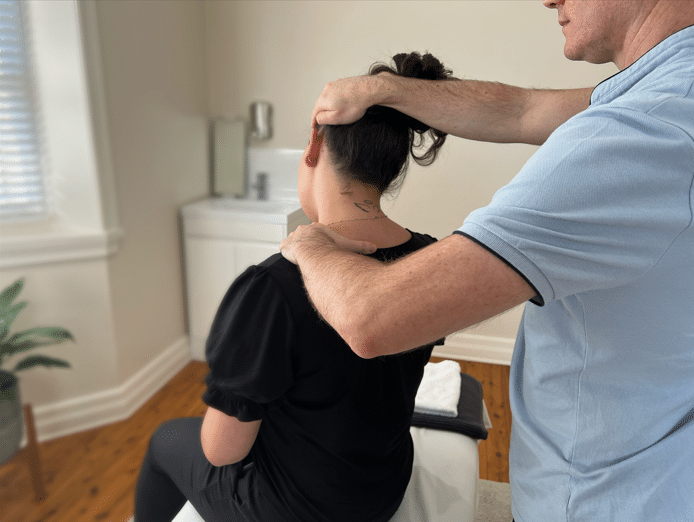
About
Five Dock Osteopathic & Chiropractic is located in Canada Bay, in Sydney’s Inner West. Servicing suburbs including Burwood, Croydon, Drummoyne, Five Dock, Haberfield, Concord, Abbotsford, Chiswick, Leichhardt, Wareemba, Russell Lea, Summer Hill, Strathfield.
Clinic hours
Monday, Tuesday, Thursday 7AM – 7PM
Wednesday, Friday 7AM – 5PM
Saturday 7AM – 2PM
Sunday Closed
Contact details
212 Great North Road, Five Dock, NSW 2046
Phone: 02 9712 1736
Fax : 02 9712 1736
Email : [email protected]